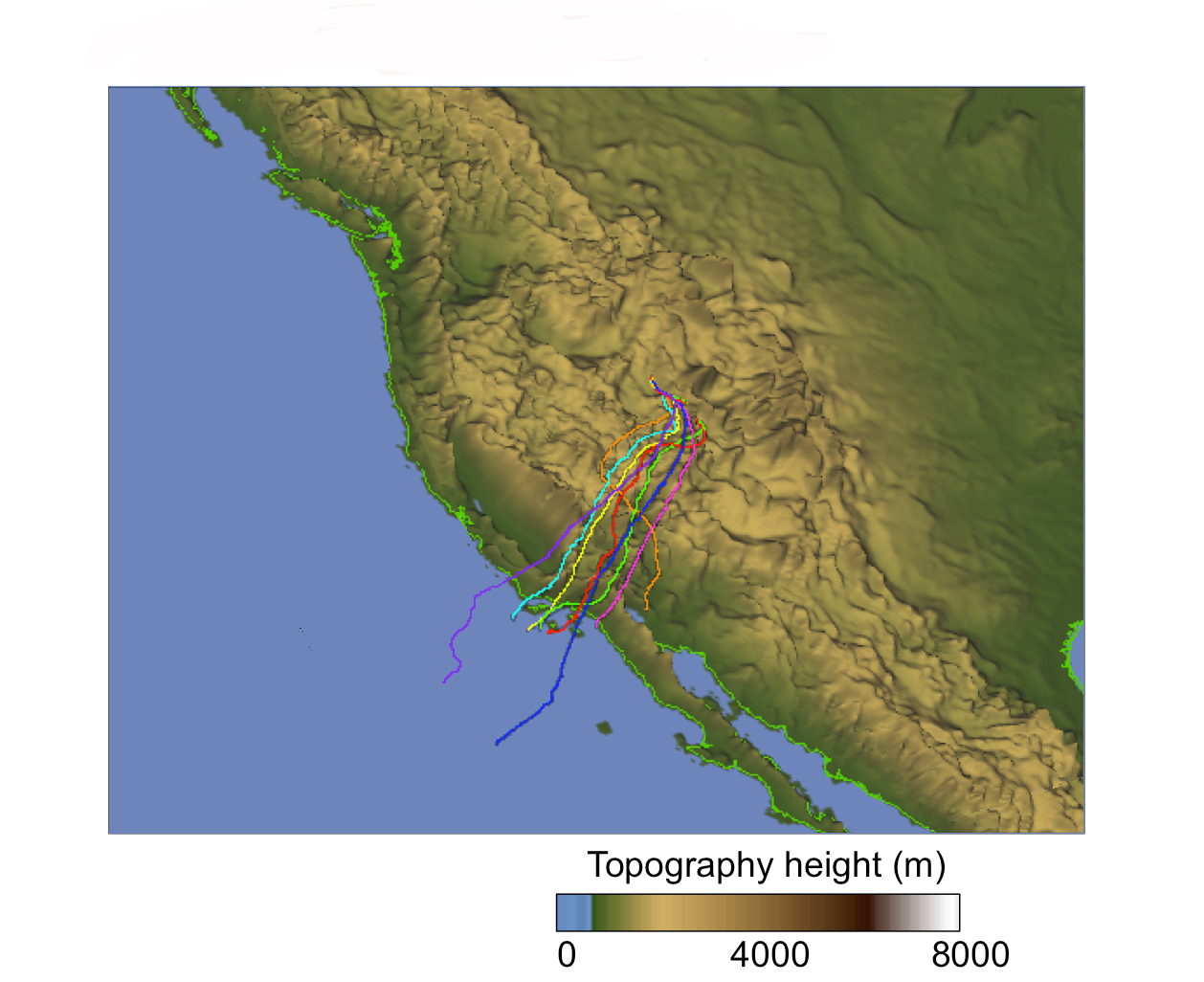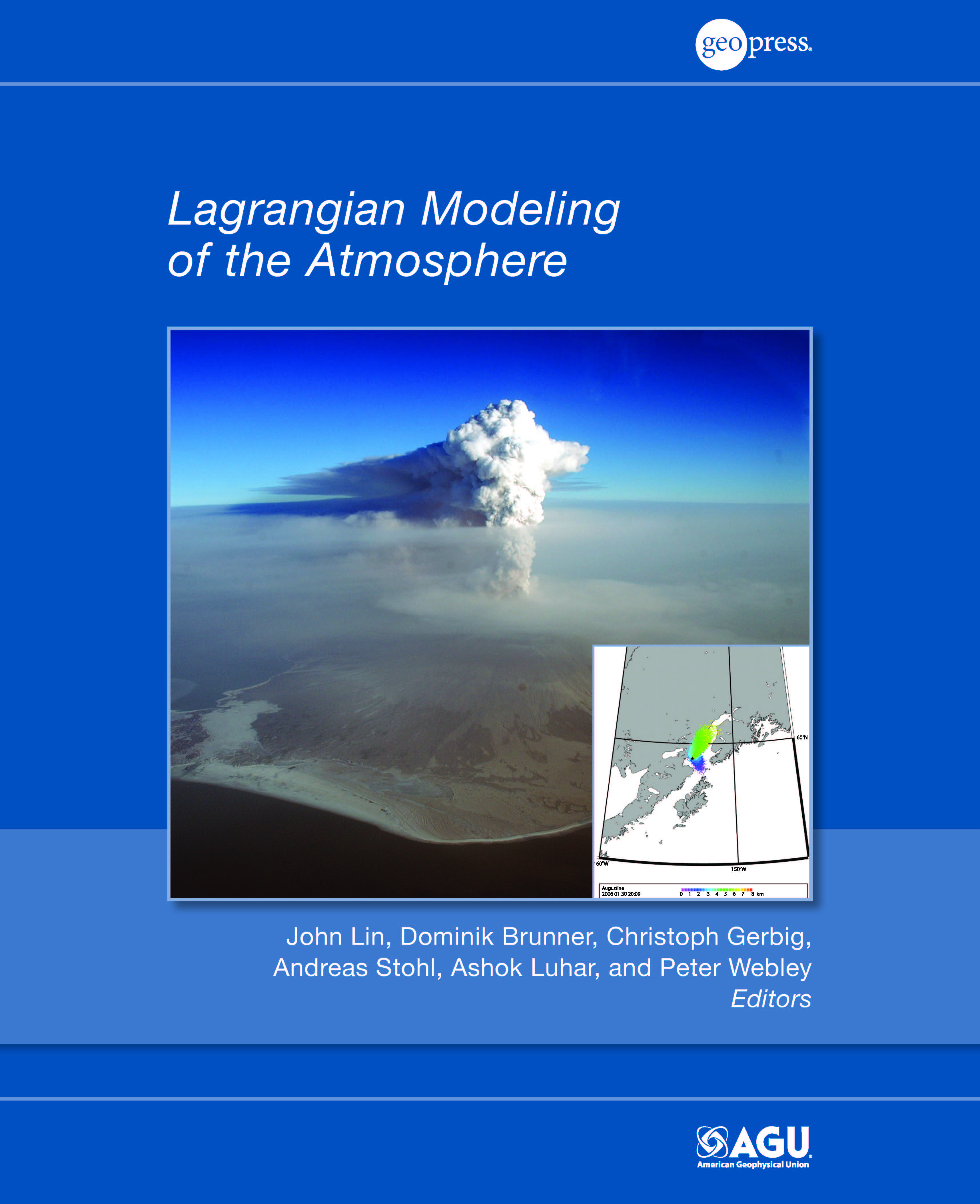“Lagrangian” atmospheric modeling is the representation of the atmosphere as little pieces of air, called “air parcels”. Lagrangian models follow the air parcels as they move through the atmosphere, tracking properties of interest such as pollutant concentration, water, or simply the trajectory of air motion.
The development and use of Lagrangian models have experienced explosive growth over the last few decades, due to the confluence of theoretical advances, accessibility to computational resources, and increased bandwidth.
Depending on the specific scientific application, Lagrangian modeling can offer numerous advantages: physical realism, sub-gridscale information, numerical stability, reduced artificial diffusion, and adherence to conservation properties.
 I have been developing and applying the Lagrangian modeling approach ever since my Ph.D. work. The specific model that has been the locus of my development efforts has been the Stochastic Time-Inverted Lagrangian Transport model, or “STILT”, for short. The specific scientific paper describing STILT can be accessed here. STILT is being used by a growing international community for interpreting trace gas measurements made at ground-based stations, on aircraft, as well as from satellites. A theme driving these applications involves the determination of sources/sinks of greenhouse gases, which is also a theme of my own research.
I have been developing and applying the Lagrangian modeling approach ever since my Ph.D. work. The specific model that has been the locus of my development efforts has been the Stochastic Time-Inverted Lagrangian Transport model, or “STILT”, for short. The specific scientific paper describing STILT can be accessed here. STILT is being used by a growing international community for interpreting trace gas measurements made at ground-based stations, on aircraft, as well as from satellites. A theme driving these applications involves the determination of sources/sinks of greenhouse gases, which is also a theme of my own research.
In addition, recent advances in my group have also enabled STILT to simulate chemical transformations of pollutants in the atmosphere, making it possible for us to apply Lagrangian modeling to study air quality. The paper describing this enhanced version of the model, “STILT-Chem”, can be accessed here.
My research interests involve the continuing development of the STILT Lagrangian model, as well as its application to understand air quality and the processes controlling greenhouse gas levels.
Many of the recent advances in Lagrangian atmospheric modeling were presented and discussed in a 2011 Chapman Conference that I organized and which was sponsored by the American Geophysical Union. Papers that arose out of the Conference can be found in the following Geophysical Monograph, for which I served as the Chief Editor:




